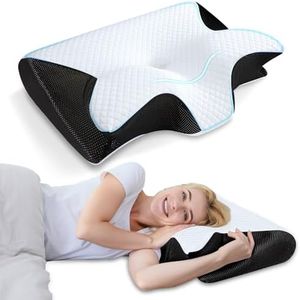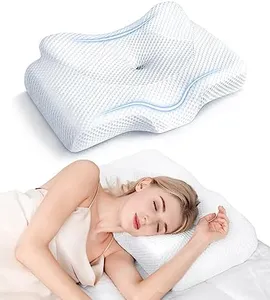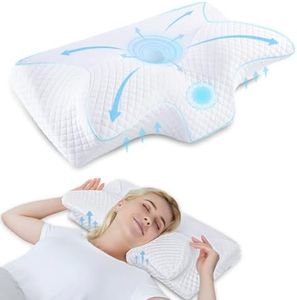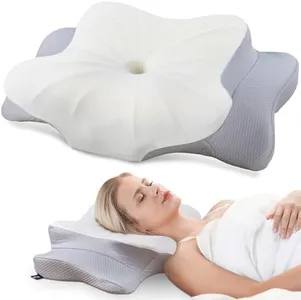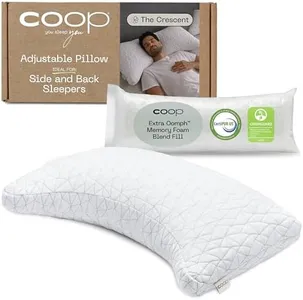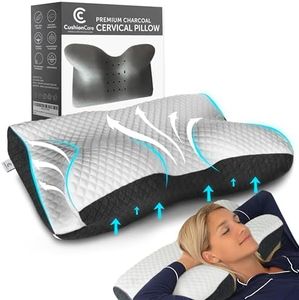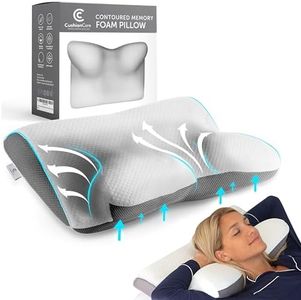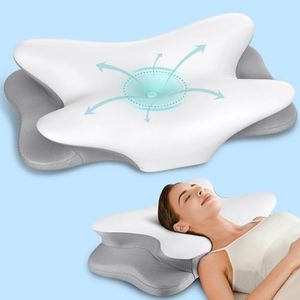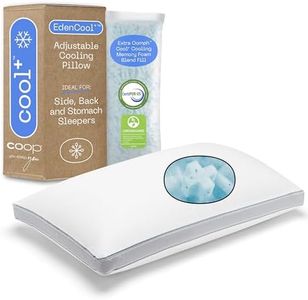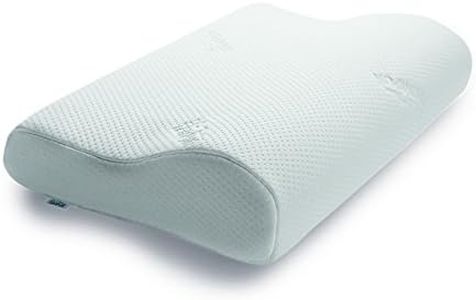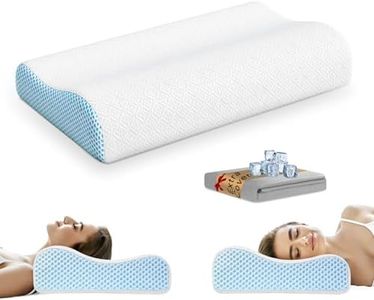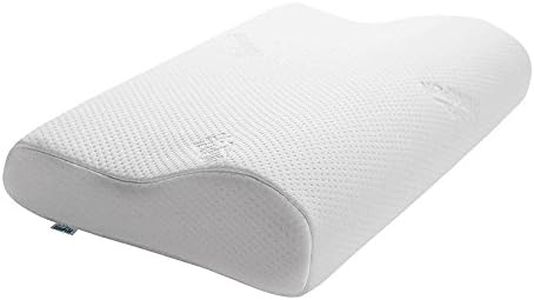We Use CookiesWe use cookies to enhance the security, performance,
functionality and for analytical and promotional activities. By continuing to browse this site you
are agreeing to our privacy policy
10 Best Pillow For Neck Pains
From leading brands and best sellers available on the web.Buying Guide for the Best Pillow For Neck Pains
Choosing the right pillow for neck pain can make a big difference in your quality of sleep and overall comfort. The key is to find a pillow that keeps your neck in a natural, neutral alignment with your spine. This means that your head should not be tilted too much up or down when you lie on your pillow. It's important to understand your typical sleeping position—back, side, or stomach—as this will influence what type of pillow works best for you.Pillow Loft (Height)Pillow loft refers to how thick or high the pillow is when it is lying flat. The height of a pillow is crucial because it determines how much it lifts your head, affecting your neck alignment. Pillows generally come in low, medium, or high loft. Low loft pillows are flatter and better for stomach sleepers who need minimal lift to avoid neck strain. Medium loft is often good for back sleepers, providing enough support without pushing the head too far forward. High loft is best for side sleepers, as it fills the space between neck and mattress, keeping the spine straight. To choose the right loft, consider your usual sleep position and how much space is between your head and the mattress.
Pillow FirmnessFirmness describes how soft or hard a pillow feels and how much it resists pressure. A firm pillow will provide more support, while a softer pillow will have more give. For those with neck pain, firmness should be balanced: too soft and your head may sink in too much, too firm and it may not contour enough to your neck's shape. Back and side sleepers typically benefit from medium to firm pillows because they support the natural curve of the neck. Stomach sleepers, who should use a pillow as flat as possible, might prefer a softer pillow. Your comfort preference and sleep position both influence which firmness level is best.
Pillow MaterialThe material inside the pillow affects support, shape, and heat retention. Common materials include memory foam, latex, feather, and polyester. Memory foam and latex offer good neck support and hold their shape, making them suitable for people with neck pain. These materials can come in solid or shredded forms; solid provides stable support, while shredded can be molded for more adjustability. Down and feather are softer and more shapeable but may not offer enough support for some people with chronic neck pain. If you want a pillow that molds to your neck and retains support, look at memory foam or latex options. For more flexibility and softness, other fills may be preferable.
Shape and ContourSome pillows have a contoured or ergonomic shape designed to fit the curve of your neck and keep your spine aligned. These are often called cervical or orthopedic pillows. These shapes can be helpful for people with existing neck pain or those who move between back and side sleeping. However, some people find contoured pillows uncomfortable at first, so adjustment can take a few nights. If you have specific neck issues or prefer extra targeted support, a contoured pillow might be best. If you like a more traditional pillow feel, stick to standard shape but make sure it supports your sleeping position.
AdjustabilitySome modern pillows now allow you to add or remove filling to adjust the height and firmness. This feature can be helpful if your preferences change or you're not sure which loft or firmness you need when starting out. An adjustable pillow lets you fine-tune the pillow to your body and find the most comfortable and supportive setup. If you're unsure what works best for you, or if your needs have changed in the past, adjustable fill pillows are a good way to experiment safely.
Breathability and Temperature RegulationThis spec refers to how well the pillow allows air to pass through and how it manages heat. Some materials, like memory foam, can trap warmth, while others, like latex or special cooling gels, are designed to stay cooler. This is important for comfort, especially if you tend to sleep hot or live in a warm climate. If you often wake up sweaty or uncomfortable, look for pillows with ventilation holes, cooling covers, or naturally cool materials.


